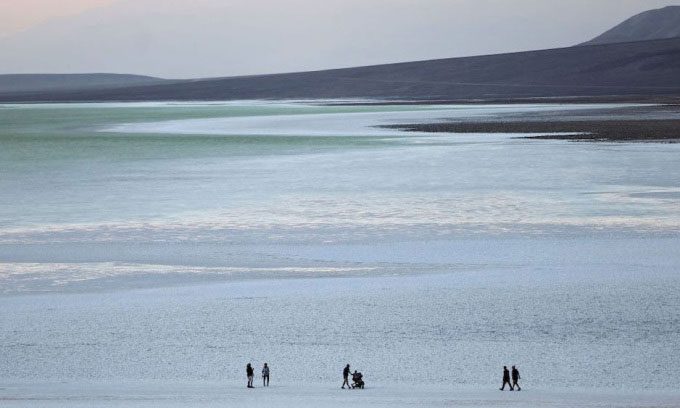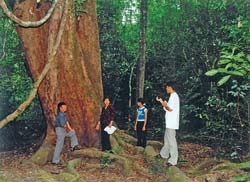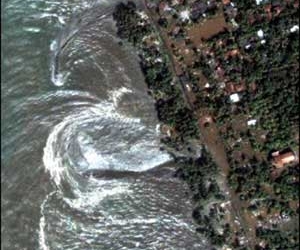Two months after the record rainfall, some areas of Death Valley look like an oasis with lakes and wildflowers.
During the summer, Hurricane Hilary swept through Death Valley National Park in California. The storm dropped an entire year’s worth of rain (5.6 cm) on Death Valley in just one day, August 20. This day marked the highest rainfall ever recorded in the park’s history. Previously, the area had never received more than 5 cm of rain in a single day, according to records dating back to 1911. The previous record was 4.3 cm set in 2022, according to the National Park Service (NPS).

Visitors walking along the rare lake that formed in Death Valley after Hurricane Hilary. (Photo: Mario Tama).
“This is definitely a rare and special event,” Live Science reported on October 26, quoting Abby Wines, a spokesperson for Death Valley National Park. She added that such heavy rainfall events typically occur only about once every ten years.
The damage was so severe that the park had to close from late August to mid-October, marking the longest closure in its history, according to park manager Mike Reynolds. The park has since reopened, but some roads remain inactive. “Every road in the park was damaged. We still have a lot of work ahead,” Wines stated.
Rainwater pooled in many scattered locations throughout the vast park following Hurricane Hilary, including the Mesquite Flat sand dunes. The abundant water also caused wildflowers to bloom early in a remote area of the park.
However, the most impressive result of Hurricane Hilary in Death Valley was a temporary lake that stretches for several kilometers. This lake is located in the Badwater Basin – the lowest point in North America, according to the National Park Service (NPS).
“Badwater is 86 cm below sea level, so it’s not surprising that rainwater collects here. What is remarkable is the lake’s persistence. Nearly two months after the historic rainfall, water is still pooled there. Wines estimates that the lake could last until around November. The amount of rain from Hurricane Hilary was significant, and it will take time for all that water to evaporate, even in the desert,” Wines explained.
Death Valley is the hottest place on Earth and the driest location in North America. The official record for the highest air temperature in the world is currently 56.7 degrees Celsius, recorded at Furnace Creek in Death Valley in July 1913. The last time a lake appeared in Death Valley was in 2019 when a 16 km long lake formed near Salt Creek.





















































